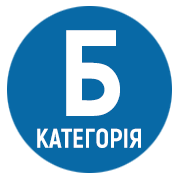THE WORLD OF EMOTIONS OF THE INHABITANTS OF THE TOWNS OF HALYCHYNA IN THE SECOND HALF OF THE 19TH AND EARLY 20TH CENTURIES
DOI:
https://doi.org/10.33402/up.2020-13-187-204Keywords:
Halychyna in the 19th century, history of emotions, intelligentsia of the 19th century, gender relationshipsAbstract
According to memoirs of the second half of the 19 - early 20th centuries, the practices of experiencing the various emotions by the inhabitants of Halychyna cities and their reflection in historical sources were analyzed. Among them, the study contains letters and memoirs of O. Barvinskyi, T. Revakovych, I. Onyshkevych, E. Olesnytskyi, I. Franko, T. Hrushkevych, B. Lepkyi, M. Rudnytska and others. According to memories, the author concludes that memoirs of the time, written mostly by men, rather sparingly describe the sensory area of life, not paying attention to the emotions that accompanied them during certain events. The study highlights typical plots that few people managed to pass unemotionally. In order to single out emotional plot lines, as many memories as possible were covered and analyzed.Such plots are separation from relatives and parents, friendly and conflicting relationships, loss of loved ones, success or trouble in the professional sphere, family relationships. Analyzing the content of correspondence, special attention is paid to gender issues, since in these sources, the greatest importance is given to love and feelings: the letters of famous writers or politicians contain plenty of emotional senses, which allows us to see a completely different personality, not the public image that others are accustomed to seeing. However, the history of emotions of the Halychyna intelligentsia of the second half of the 19 – early 20th centuries contains a subjective dimension it is also closely related to the ordinary moments of biography and social relations. This can be seen especially clearly in the examples of interethnic conflicts. Attention is drawn to the fact that the author’s experience of certain events is reflected by using epithets, comparisons, and semantic content of words. The author elucidated that the study of the history of Halychyna families through the prism of emotions allows us to slightly deviate from the common understanding of the then gender distribution of roles, as well as a person’s ideas about death and life after death.
References
Arkusha, O. (2014). Povsiakdenne zhyttia ukrainskoho intelihenta u Lvovi kintsia XIX – pochatku XX stolittia (za materialamy fondu rodyny Hrushkevychiv). In K. Karolczak & Ł. T. Sroka (Ed.), Lwów: miasto – społeczeństwo – kultura. Studia z dziejów miasta (Vol. 9, pp. 210–243). Kraków: Wydawnictwo naukowe Uniwersytetu Pedagogicznego [in Ukrainian].
Barvinskyi, O. (2004). Spomyny z moho zhyttia (A. Shatska & O. Fedoruk, Ed.). (Vol. 1). Kyiv [in Ukrainian].
Bobykevych, O. (1992). Spohady z moikh rokiv. In «V svoii khati svoia pravda…»: Storinky istorii Stryia (p. 43). Stryi [in Ukrainian].
Cherchovych, I. (2013). Emansypatsiia zhinok v interpretatsiiakh natsionalnoi elity Halychyny druhoi polovyny ХІХ – pochatku ХХ stolit. Ukrainoznavchyi almanakh, 14, 86–90 [in Ukrainian].
Chernetskyi, A. (2001). Spomyny z moho zhyttia. Kyiv [in Ukrainian].
Diadiuk, M. (Ed.). (1998). Milena Rudnytska. Statti, lysty, dokumenty. Lviv [in Ukrainian].
Dilo (Lviv). (1885, Sichen 17) [in Ukrainian].
Dilo (Lviv). (1885, Sichen 26) [in Ukrainian].
Dilo (Lviv). (1890, Liutyi 16), 37 [in Ukrainian].
Dilo (Lviv). (1891, Lystopad 2) [in Ukrainian].
Dilo (Lviv). (1891, Lystopad 4) [in Ukrainian].
Dilo (Lviv). (1891, Zhovten 2) [in Ukrainian].
Gazeta Narodowa (Lviv). (1883, Lipiec 10), 154 [in Polish].
Hnatiuk, M. (Ed.). (2011). Spohady pro Ivana Franka. Lviv [in Ukrainian].
Kolomyiske slovo (Kolomyia). (1914, Berezen 26), 11 [in Ukrainian].
Kolomyiske slovo (Kolomyia). (1914, Cherven 25), 23 [in Ukrainian].
Kolomyiske slovo (Kolomyia). (1914, Kviten 16), 14 [in Ukrainian].
Kolomyiske slovo (Kolomyia). (1914, Kviten 19), 13 [in Ukrainian].
Kolomyiske slovo (Kolomyia). (1914, Lypen 16), 25 [in Ukrainian].
Kolomyiske slovo (Kolomyia). (1914, Sichen 29), 3 [in Ukrainian].
Lepkyi, B. (1967). Kazka moho zhyttia. New York [in Ukrainian].
Lev, V. (Comp.). (1970). Berezhanska zemlia. Istorychno-memuarnyi zbirnyk (Vol. 2) New York; Paris; Sydney; Toronto [in Ukrainian].
Melnychyk, B., Semenets, I., & Volynets, N. (Ed.). (1993). Berezhanshchyna u spohadakh emihrantiv. Ternopil [in Ukrainian].
Mudryi, M. (2014). Pokhorony ta mohyly: z istorii tvorennia u Lvovi ukrainskoho natsionalnoho prostoru v druhii polovyni XIX – na pochatku XX stolittia. In K. Karolczak & Ł. T. Sroka (Ed.), Lwów: miasto – społeczeństwo – kultura. Studia z dziejów miasta (Vol. 9, pp. 144–156). Krakow: Wydawnictwo naukowe Uniwersytetu Pedagogicznego [in Ukrainian].
Olesnytskyi, Ye. (2011). Storinky z moho zhyttia (M. Mudryi, B. Savchyk, Comps.). Lviv: Medytsyna i pravo [in Ukrainian].
Shukhevych, S. (1991). Moie zhyttia. Spohady. London: Vydannia ukrainskoi vydavnychoi spilky [in Ukrainian].
Slovo (Lviv). (1886. Liutyi 12), 18 [in Ukrainian].
Tarnavskyi, F. (1981). Spohady: Rodynna khronika Tarnavskykh yak prychynok do istorii tserkovnykh, sviashchenytskykh, pobutovykh, ekonomichnykh i politychnykh vidnosyn u Halychyni v druhii polovyni XIX storichchia i v pershii dekadi XX storichchia. Toronto [in Ukrainian].






